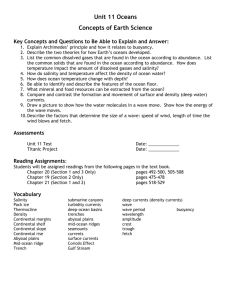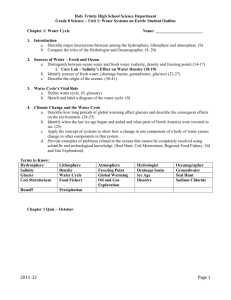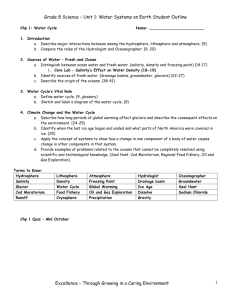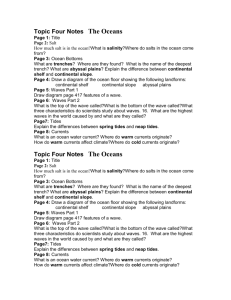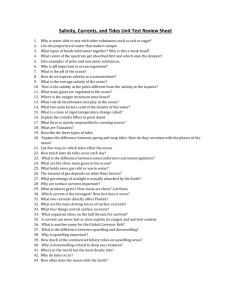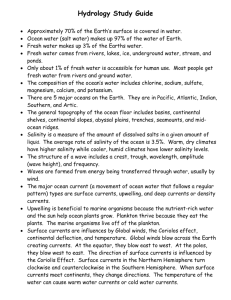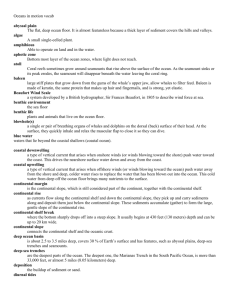Water Systems Study Guide: Ocean Basins & Processes
advertisement
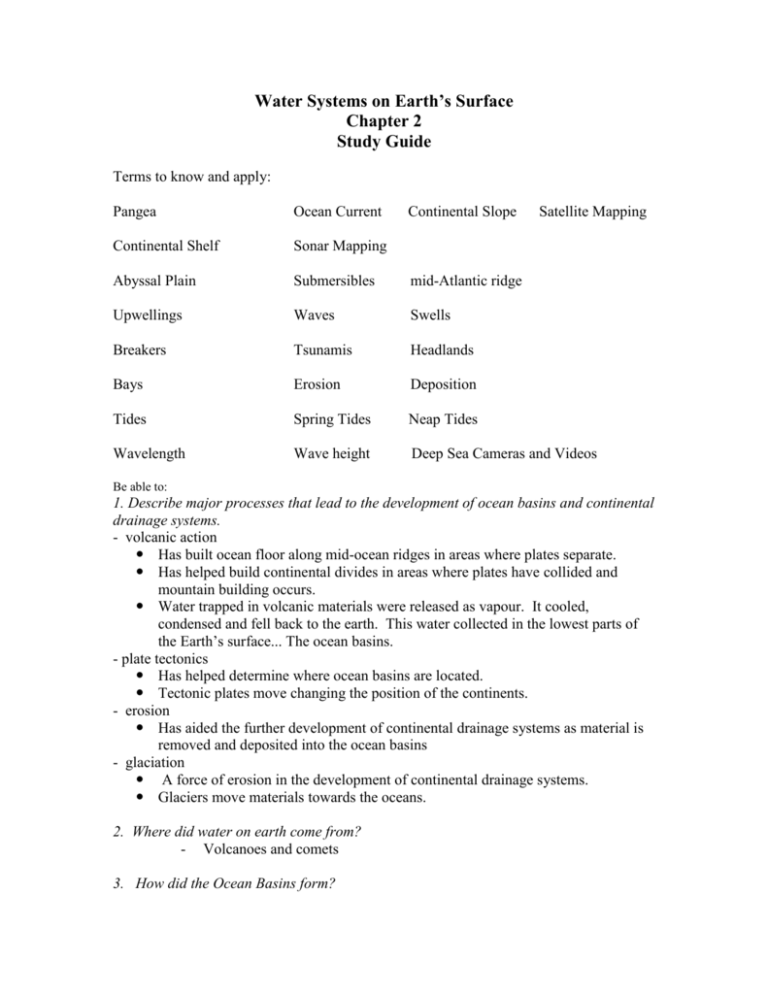
Water Systems on Earth’s Surface Chapter 2 Study Guide Terms to know and apply: Pangea Ocean Current Continental Slope Satellite Mapping Continental Shelf Sonar Mapping Abyssal Plain Submersibles mid-Atlantic ridge Upwellings Waves Swells Breakers Tsunamis Headlands Bays Erosion Deposition Tides Spring Tides Neap Tides Wavelength Wave height Deep Sea Cameras and Videos Be able to: 1. Describe major processes that lead to the development of ocean basins and continental drainage systems. - volcanic action Has built ocean floor along mid-ocean ridges in areas where plates separate. Has helped build continental divides in areas where plates have collided and mountain building occurs. Water trapped in volcanic materials were released as vapour. It cooled, condensed and fell back to the earth. This water collected in the lowest parts of the Earth’s surface... The ocean basins. - plate tectonics Has helped determine where ocean basins are located. Tectonic plates move changing the position of the continents. - erosion Has aided the further development of continental drainage systems as material is removed and deposited into the ocean basins - glaciation A force of erosion in the development of continental drainage systems. Glaciers move materials towards the oceans. 2. Where did water on earth come from? - Volcanoes and comets 3. How did the Ocean Basins form? - water collected in the lowest parts of the Earth’s surface known as the oceans water basins. 4. Describe the layout and structure of the ocean floor. Include the continental shelf, slope, abyssal plain, and mid-Atlantic ridge. There is a better diagram in text. 5. Investigate technologies that have assisted scientists to research ocean basins. Including: - sonar - satellites - underwater photography / videography - deep sea submersibles Answers can be found on their posters. 6. What are ocean currents? Ocean currents are large amounts of ocean water that moves in a particular and unchanging direction. 7. List the two major currents that intersect near Newfoundland. What affect do these currents have on the climate? The two major currents that intersect near Newfoundland are The cold Labrador current and The warm Gulf Stream. When the two two different temperature currents meet they create the foggy climate often seen on the Newfoundland coastlines. 8. Draw and fully label a wave. 9. How does a breaker form? A breaker is a tumble of water when a wave collapses onshore. This occurs because the trough catches on the shallow shore while the crest of the wave continues at the same speed causing the crest of the wave to topple over the trough of the wave creating a breaker. During this process the wavelength decreases and the waveheight increases as it approaches the shore. 10. What is a tsunami and how are they formed? Giant waves that can be sent in motion by earthquakes on the ocean floor, landslides or volcanic eruptions near the shoreline. 11. Describe the difference between a headland and a bay. How do they erode differently? Headland is the area of land that lies at the head of the Bay. It is the first point of contact before entering the Bay. The Bay is the inlet between the two headlands. The wave energy is dispersed and is not as concentrated as waves that hit the headlands. 12. What is the difference between a spring tide and a neap tide? Draw a picture to support your answer. The Spring Tides have the largest tidal movements. These occur when the sun and the moon and earth are in line with each other. There is a big difference between the low and hide tides. The Neap Tides have the smallest tidal movements. These occur when the sun and the moon are at right angles to each other. There is little difference between the low and hide tides.
